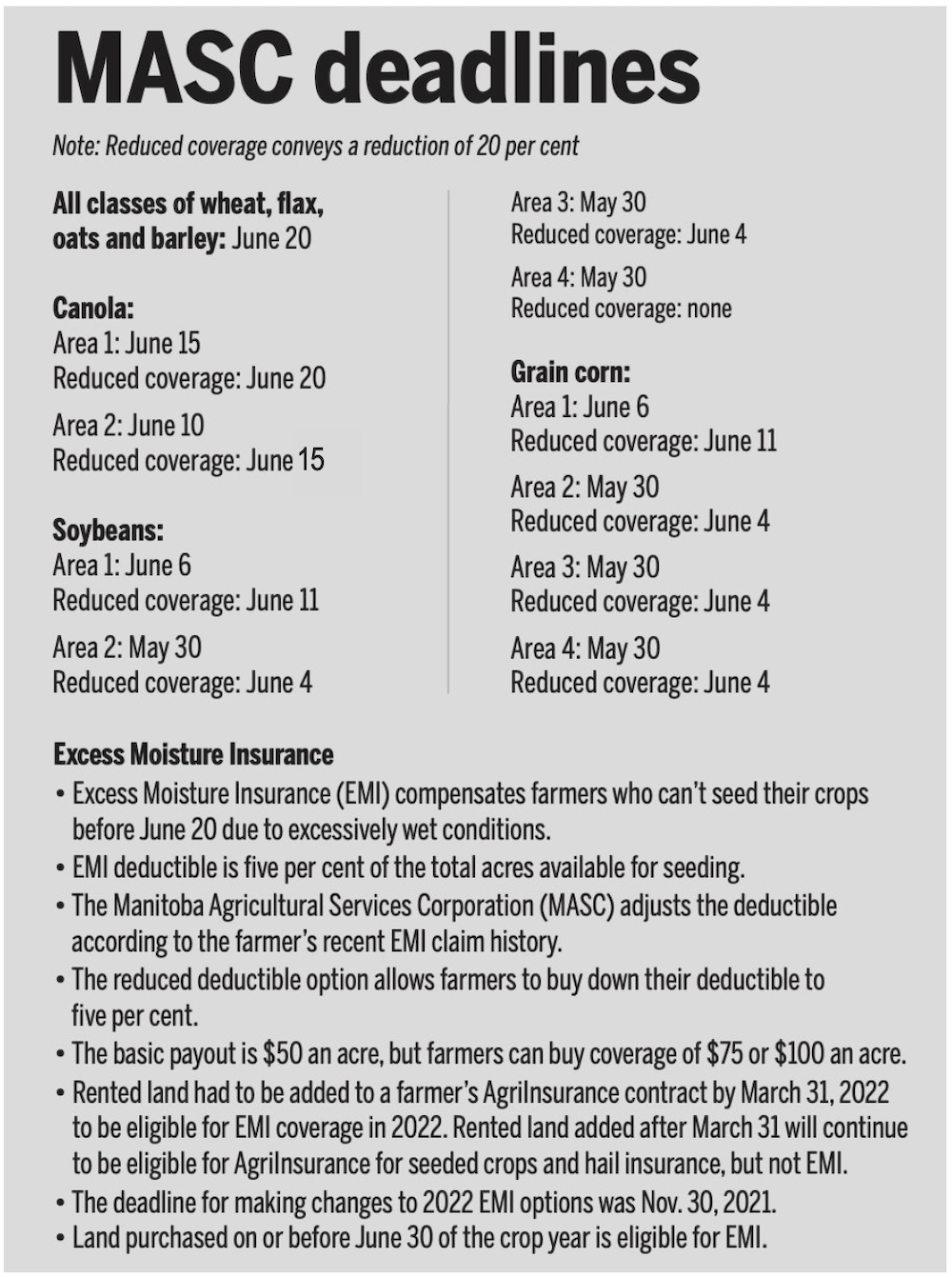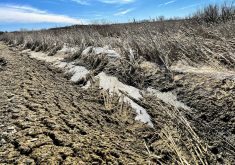[UPDATED: May 20, 2022] The last time there were extended seeding deadlines for crop insurance in Manitoba, it was 2004.
Despite wet weather delaying planting this year, 2022 is unlikely to see a repeat.
“We’re not contemplating, at this point, any changes to our seeding deadlines,” said David Van Deynze, Manitoba Agricultural Services Corporation’s (MASC) chief product officer. “We are looking at them to make sure they are still relevant and accurate from an agronomic perspective, but we’re not looking at it from a ‘how wet is it outside?’ perspective.”
Read Also

Manitoba boosts stake in cereals centre to $20 million
Premier Wab Kinew said the additional project funds will help ‘Trump-proof’ the provincial economy.
Social media posts show a bit of seeding underway in Manitoba in the wake of a wet, cool spring, but with more rain in the forecast and hundreds of acres still under water in the Red River Valley, planting will be further delayed.
That’s a big worry to farmers, with declining yield potential the longer seeding is postponed.
In the meantime, the date to have certain crops such as canola, soybeans and grain corn seeded, in order to be covered by crop insurance, grows nearer.
The deadline for seeding cereals and flax is June 20.
History
Like this year, the spring of 2004 was wet and cold. On May 31, 2004, a news release from then-agriculture-minister Rosann Wowchuk announced a five-day seeding deadline extension, except for crops with a June 20 deadline. Then, like now, that late threshold covered cereals and flax.
At that time in 2004, an estimated 75 per cent of Manitoba’s crop had been seeded.
Seeding deadlines were also extended in 1997, during the Flood of the Century. At that time, however, the deadline for seeding wheat was June 15. That year it was extended to June 20.
Manitoba Agriculture data show as of the second week of May only four per cent of Manitoba’s crop had been seeded, compared to 44 per cent during the same week last year and the five year average of 50 per cent.
Seeding was 99 per cent completed by the second week of June last year and the same percentage holds for the five year average.
“Farmers are struggling to get a crop in, there’s no doubt about that, but that doesn’t change when it’s too late to seed some crops,” Van Deynze said. “Just because they are later starting doesn’t automatically mean they’re going to have an open fall…The part we struggle with is that our seeding deadlines are based on agronomic and yield data in the first place and, second, they are already, in our minds, quite generous in that they are probably later than they should be.”
Excess Moisture Insurance
Insured farmers unable to seed by the deadline are generally eligible for a $50-per-acre payment under MASC’s Excess Moisture Insurance (EMI).
In 2011, a record three million insured acres went unseeded due to excess moisture, resulting in payouts of $162.3 million.
That year, average yields for many crops were below the previous three-year average, unlike 1997, when main crops yielded similarly to the previous three years.
*Update(s): Corrections to percentages of historical seeding progress were made. Plus, the graphic below previously indicated the ‘Area 2 Reduced coverage’ date for canola was June 20.

















